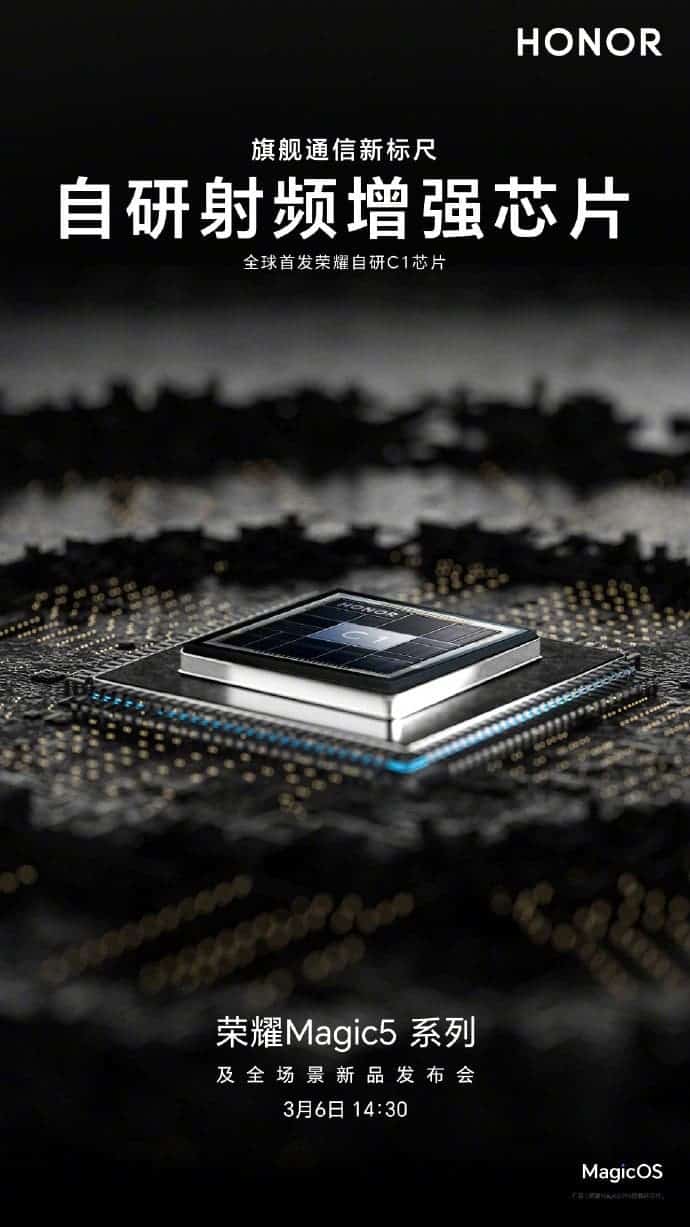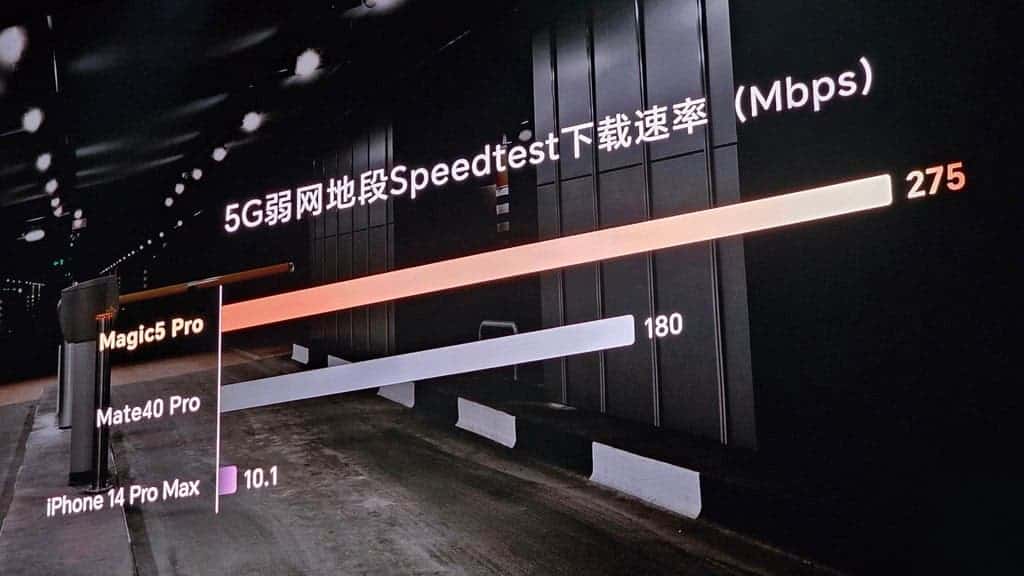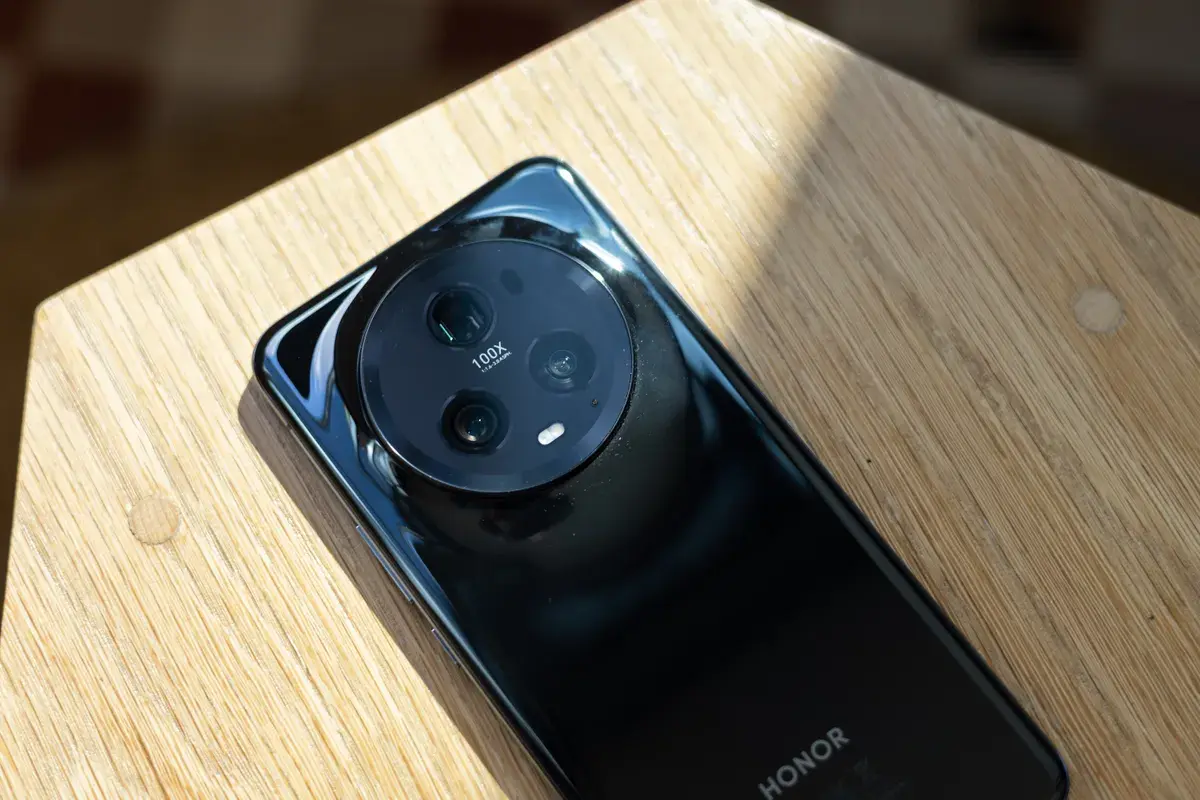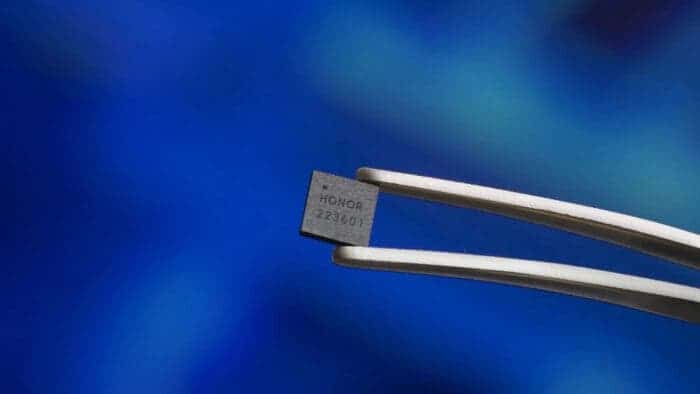Back on 2nd March, Honor announced its first in-house chipset, the Honor C1 RF network chip. And it was one of the major steps for the Chinese brand to accomplish its future plans. Nonetheless, Honor has debuted the chipset with its Magic 5 smartphones today.
With the debut came the comparisons. On stage, Zhao Ming, the CEO, talked about how the Huawei Mate 40 Pro is the current benchmark in 5G network technologies. And he continued that with the Honor C1 RF, the benchmark is about to see a new leader.
All About the Honor C1 RF Chipset
At its core, the Honor C1 RF is a radio frequency chipset. It aims to provide the best connectivity even in areas with low network availability. And to fill you in, the Huawei Mate 40 Pro is the current flagship phone with a robust 5G chipset. Later that, Huawei faced US sanctions, which stopped the manufacturer from evolving.
Nevertheless, instead of following in the footsteps of Huawei, the Honor C1 RF chip enhances 5G network performance. According to the brand, the chip is capable of increasing antenna transmission intake by 17%.

Likewise, it can enhance the WiFi rate by 200% and antenna reception by 35%. Most importantly, the Honor radio frequency chipset can reduce WiFi latency by up to 90%.
Benchmark Results
So, how does the Honor C1 RF chipset fair with the current leaders? After officially debuting the chip, the brand put the Magic 5 against the Apple iPhone 14 Pro Max and Huawei Mate 40 Pro. According to Honor, the results were taken from an area with poor cell reception. So, the numbers showcase the worst possible results.
With the C1 RF, Honor Magic 5 could reach 275Mbps, while the iPhone 14 Pro Max got 10.1 Mbps, and Huawei Mate 40 Pro had 180Mbps in a speed test. In other words, the chipset is making huge leads against the current flagship devices in the market.

But it’s not like the new Honor radio frequency chip is all about network speed. It also focuses on call quality. For example, the Honor Magic 5 Pro got -8dBm in call disconnection, while the iPhone 14 Pro Max had -2dBm, and Mate 40 Pro reached -4dBm.
Now, those are some excellent results in a low-network scenario. And it would mean that the Honor C1 RF will excel in terms of offering great cellular connections.
How Did Honor C1 RF Manage to Pull Ahead
The magic behind Honor’s network enhancement feature is the support for a cellular multi-antenna fusion tuning algorithm. This algorithm optimizes the performance of the antenna while making smart switching adjustments depending on the network strength.
Moreover, the Honor C1 RF utilizes a new multi-standard antenna fusion algorithm. It can improve the transceiver performance of a 2.4 GHz single antenna by 17% and the WiFi rate by 200%.

On that note, the Honor Magic 5 lineup features DSDA mode dual-SIM dual standby. That enables the establishment of dual lanes between both sim cards without the need for resource sharing. So, with the C1 RF chipset, Honor smartphones can even offer great dual sim performance.
To enhance the WiFi connection, Honor is using its Bluetooth antenna architecture. It lowers the lag in the connection and ensures high-speed connectivity. That will enhance the internet experience to a huge level.
Still, all of this info about the C1 RF chipset is coming from Honor itself. While the numbers may sound exciting, you should still wait for a user review. Even so, Honor currently has big ambitions. So, it is likely that the chipset will actually be as revolutionary as it is posing to be.





